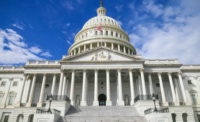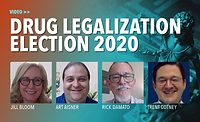Whether politically active or not, roofing contractors will feel the impact of the 2020 Election in their businesses throughout the year, and most likely for years to come. Those that embrace that fact can find ways to seize business opportunities all the way up to Election Day on Nov. 3, said longtime roofing industry lobbyist Craig Brightup.
Brightup, CEO of the Brightup Group -- a government consulting firm based in Washington, D.C., told the crowd at Best of Success that the current stalemate and frustration coming from the nation’s capital could all change rather quickly if a few seats swing one way or another next fall. But before he’d give any predictions on what the political landscape could look like at the start of 2021, Brightup had to provide a quick lay-of-the-land update on the current state of the federal government – pre-presidential impeachment proceedings.
“The 116th Congress, in terms of productivity, is kind of like ‘Seinfeld.’ It’s a show about nothing,” said Brightup, who has spent three decades advocating for the roofing industry and other construction trades on Capitol Hill.
With opposing parties in control of the U.S. Senate and U.S. House of Representatives, and a presidential administration in constant flux while navigating turmoil, real solutions for business owners and workers in the roofing industry may seem out of reach. Progress has been limited on lingering issues like immigration, workforce and apprenticeship training, and the cost of simply trying to do business.
However, there are reasons to be optimistic, according to Brightup. He pointed to multiple examples of political “wins” roofing contractors can and should be benefiting from, such as:
- 30,000 additional H2B visas presented by congress to be administered by the Dept. of Homeland Security, which could be authorized by year’s end.
- The confirmation by the U.S. Senate of 150 judicial nominations to federal benches around the country.
- Speeding up sub-cabinet nominations, and confirming pro-business officials to bodies that impacts federal regulatory agencies like OSHA and the National Labor Relations Board.
- Approval of the 2017 Tax Cuts and Jobs Act, which included a provision that raised the limit on capital assets – like roofs – to $1million.
- Regulatory reforms, including cuts to OSHA’s enforcement budget and the slashing of roughly 30,000 pages from U.S. regulatory codes.
A clear direction on immigration policy would be the best immediate remedy to the roofing industry’s workforce problem, and it’s possible, Brightup said. But will just take time.
He said it’s likely going to take a ruling by the U.S. Supreme Court on whether the President Donald Trump has the authority to rescind the childhood-arrival executive order implemented by Obama administration.
“That will be a catalyst I think for Congress to actually do something,” he said.
In the meantime, he encouraged roofing contractors to continue to stay politically motivated and active through advocacy initiatives like the NRCA’s annual Roofing Day.
“Don’t let that dissuade you from coming to Washington. You’ve got to keep at it,” he explained. “You are hard workers, you make something that people need, and the government didn’t tell you you’re going to be a roofing contractor. You’re doing it because you’re good at what you do."





Report Abusive Comment